Have you ever looked at a science chart and seen strange letters like H, O, Na, or Fe? At first, they might look like secret codes or puzzle pieces. But these little letters are not random—they are chemical symbols. Scientists all over the world use them as a universal language to describe every element in the universe.
A chemical symbol is like a nickname for each element. Instead of writing “oxygen” every time, we write O. Instead of writing “sodium,” we write Na. It’s simple, quick, and understood no matter which language you speak. Just like traffic signs help everyone understand the road, chemical symbols help scientists everywhere understand matter.
In this article, we’ll uncover what chemical symbols are, how they are written, and how you can learn to read them easily. Don’t worry—we’ll keep it very simple. By the end, you’ll be able to look at those strange letters on the periodic table and say, “I know exactly what that means.”
What Are Elements?
Everything you see around you—your chair, the water you drink, even your own body—is made up of tiny building blocks called elements. An element is the simplest form of matter that cannot be broken down into anything smaller by normal chemical methods.
For example, gold is an element. If you cut a piece of gold into smaller and smaller pieces, each piece would still be gold. The same is true for oxygen, iron, or hydrogen. Each element has its own special properties that make it unique.
Scientists have discovered over 100 elements so far. Some are common, like oxygen and carbon. Others are rare, like platinum or uranium. Together, they make up everything in the universe.
Why Do Elements Need Symbols?
Imagine if every time you wanted to talk about oxygen, you had to write the whole word. It would take too long, especially in big equations. Scientists needed a quicker, simpler way. That’s why they created chemical symbols.
A chemical symbol is usually just one or two letters. For example:
- Oxygen becomes O
- Carbon becomes C
- Hydrogen becomes H
This makes it much easier to read and write chemistry.
But symbols also solve another problem: language differences. In English, we say “oxygen,” but in French it’s “oxygène,” and in German it’s “Sauerstoff.” If scientists from different countries used their own words, it would be very confusing. By using the symbol O, everyone understands instantly.
So, chemical symbols are like the universal alphabet of science. No matter where you are in the world, an O always means oxygen.
Where Do Symbols Come From?
You might have noticed that not all symbols match their English names. For example, sodium is written as Na, not S. That’s because many symbols come from the element’s Latin name.
- Sodium comes from natrium → Na
- Iron comes from ferrum → Fe
- Potassium comes from kalium → K
This shows that chemistry has a long history. Scientists kept many of the older names so that the system would stay consistent worldwide.
Elements as Building Blocks
Think of elements as letters of the alphabet. Just as you can combine letters to make words, you can combine elements to make compounds. For example:
- Combine hydrogen (H) and oxygen (O) → you get water (H₂O).
- Combine sodium (Na) and chlorine (Cl) → you get salt (NaCl).
This is why symbols are so important. They allow us to quickly describe how elements join together to form everything around us.
How to Read Chemical Symbols
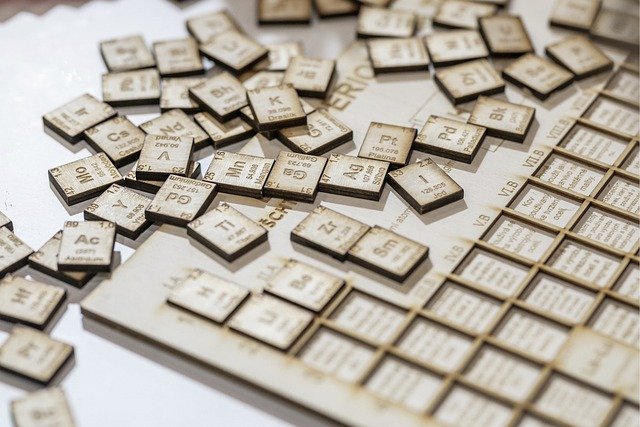
Every chemical symbol looks small, but it carries a lot of meaning. Once you know the rules, you’ll be able to read them like a pro. Let’s go slowly and carefully.
One-Letter Symbols
Some elements are represented by a single capital letter. For example:
- H = Hydrogen
- C = Carbon
- O = Oxygen
- N = Nitrogen
When you see a single capital letter, it always stands for one element. It’s never just a random letter.
Two-Letter Symbols
Many elements use two letters. The first letter is always capitalized, and the second is always lowercase. For example:
- He = Helium
- Na = Sodium
- Fe = Iron
- Cl = Chlorine
This is important because writing the wrong case changes the meaning. For example, Co is cobalt (a metal), but CO is carbon monoxide (a compound of carbon and oxygen).
So when you read symbols, always check if the second letter is uppercase or lowercase.
Numbers in Symbols
Sometimes, you’ll see numbers written with chemical symbols. These numbers give even more information.
For example:
- H₂O → This is water. The small “2” tells you there are two hydrogen atoms bonded with one oxygen atom.
- CO₂ → This is carbon dioxide. It means one carbon atom and two oxygen atoms.
- NaCl → This is table salt. One sodium atom joined with one chlorine atom.
The numbers act like instructions, showing exactly how many of each element are present. If no number is written, it means there’s just one atom of that element.
Atomic Number and Mass
On the periodic table, each symbol is often shown with two important numbers:
- The atomic number (at the top) tells you how many protons the element has. For example, hydrogen (H) has an atomic number of 1, so it has 1 proton. Oxygen (O) has 8, so it has 8 protons.
- The atomic mass (usually below the symbol) tells you how heavy the atom is compared to others. It’s based on the number of protons and neutrons together.
These numbers give scientists even more details about each element. But for now, the key idea is that every element has its own unique symbol, atomic number, and atomic mass.
A Quick Example
Let’s read H₂O together.
- H = Hydrogen (there are 2 of them).
- O = Oxygen (there’s 1 of it).
- Together, this makes water.
Or take Fe.
- Fe = Iron.
- The symbol comes from its Latin name ferrum.
Once you start practicing, these little codes become easy to understand.
The Periodic Table – A Map of Elements
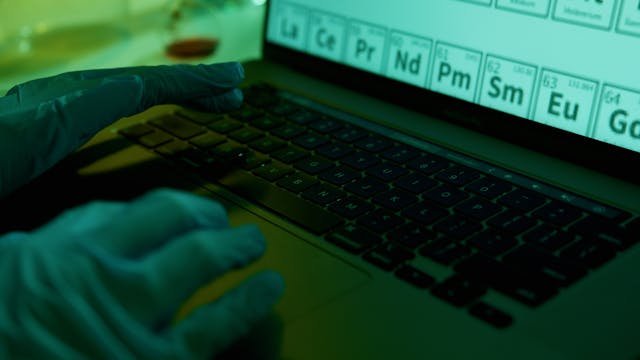
The periodic table may look like a giant puzzle with letters, numbers, and colors. At first, it can feel confusing. But once you understand its structure, it becomes one of the most useful tools in all of science. It tells you everything you need to know about each element just by looking at its symbol and position.
The Layout of the Table
The periodic table is arranged in rows and columns.
- The rows are called periods. As you move across a row, the elements change in a predictable way, from reactive metals on the left to stable gases on the right.
- The columns are called groups. Elements in the same group have similar properties because they share the same number of outer electrons. For example, the group containing sodium (Na) and potassium (K) are all highly reactive metals.
So the table isn’t random—it’s carefully arranged to show patterns in the elements’ behavior.
What Each Square Shows
Each square on the table usually has:
- The chemical symbol (like H, O, Na, Fe).
- The name of the element (sometimes written in full).
- The atomic number (at the top, showing number of protons).
- The atomic mass (showing how heavy the atom is).
For example, the square for oxygen looks like this:
- Symbol: O
- Atomic number: 8
- Atomic mass: about 16
This tells us oxygen has 8 protons, and each atom weighs about 16 units.
Groups of Elements
The table is also color-coded or divided into sections:
- Metals: Found mostly on the left and center. They are shiny, conduct electricity, and often react strongly. Examples: Fe (iron), Na (sodium).
- Nonmetals: Found on the right side. They don’t conduct electricity and include gases like O (oxygen) and N (nitrogen).
- Noble gases: The last column (group 18). These elements, like He (helium) and Ne (neon), are very stable and don’t react much.
By just looking at where an element sits, you can guess how it behaves.
How the Table Helps You Read Symbols
Let’s say you see the symbol K. You might not know what it means right away. But if you look at the table, you’ll find it in group 1 with sodium (Na). That tells you it’s potassium, a reactive metal, and it behaves a lot like sodium.
Or take Cl. You’ll find it in group 17, next to other elements like fluorine (F). That tells you chlorine is a reactive nonmetal, often found in compounds like table salt (NaCl).
So the periodic table is not just a list—it’s a guide. It helps you understand the story behind each symbol.
A Universal Language
The beauty of the periodic table is that it works for everyone. Whether you’re in Japan, Brazil, or Nigeria, the symbol O always means oxygen, and Au always means gold. It’s a shared language that unites scientists across the world.
Using Chemical Symbols in Real Life
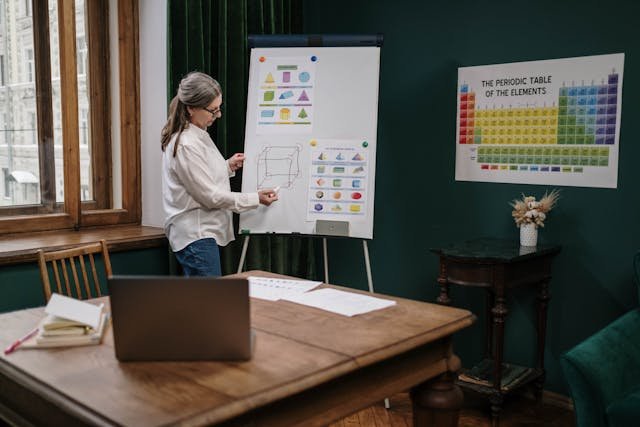
Chemical symbols are not just letters on a chart. They are tools that scientists (and students like you) use to describe the world around us. From the water you drink to the air you breathe, everything can be written using symbols.
Reading Chemical Formulas
A chemical formula shows which elements are in a compound and how many atoms of each are present. Let’s look at some common examples:
- H₂O (Water)
This means 2 atoms of hydrogen (H) are bonded to 1 atom of oxygen (O). Every sip of water is made of millions of these tiny molecules. - CO₂ (Carbon Dioxide)
This means 1 atom of carbon (C) is bonded to 2 atoms of oxygen (O). It’s the gas we exhale when we breathe out, and plants use it to make food. - NaCl (Table Salt)
This means 1 atom of sodium (Na) bonded with 1 atom of chlorine (Cl). Together, they form the crystals we sprinkle on food.
Notice how these formulas are short and simple. Instead of writing long words like “carbon dioxide” or “sodium chloride,” scientists can quickly show the exact recipe using symbols.
How to Read Subscripts
The small numbers in formulas are called subscripts. They tell you how many atoms of each element are in a molecule.
- H₂O = 2 hydrogens, 1 oxygen
- C₆H₁₂O₆ (glucose, a type of sugar) = 6 carbons, 12 hydrogens, 6 oxygens
If there’s no subscript, it means just 1 atom. For example, NaCl has no numbers, so it’s 1 sodium and 1 chlorine.
Writing Chemical Equations
Symbols and formulas also appear in chemical equations, which show what happens during reactions. For example:
H₂ + O₂ → H₂O
This shows that hydrogen gas (H₂) reacts with oxygen gas (O₂) to form water (H₂O). Each side of the arrow shows what you start with (reactants) and what you end with (products).
Another example:
Na + Cl → NaCl
This shows sodium (Na) reacting with chlorine (Cl) to form table salt (NaCl).
Equations are like recipes—they tell you what ingredients you need and what you’ll get in the end.
Why This Matters in Daily Life
Everyday substances can be described with these symbols. The air we breathe is mostly N₂ (nitrogen) and O₂ (oxygen). The gas in sodas is CO₂ (carbon dioxide). Even the rust on old metal is written as Fe₂O₃ (iron oxide).
By learning to read these formulas, you can understand the hidden chemistry of your world. What looks like a jumble of letters becomes a clear language describing matter itself.
The History of Chemical Symbols
When you look at today’s periodic table, with its neat one- or two-letter symbols, it’s easy to forget that science wasn’t always this organized. Long ago, people had very different ways of representing the substances around them.
The Age of Alchemy
Before modern chemistry, there was alchemy. Alchemists were curious thinkers who studied metals, minerals, and mysterious powders. They often wrote about their experiments using strange symbols and drawings instead of letters. For example, they had special marks for gold, silver, and mercury.
Gold, for instance, was drawn as a circle with a dot in the center ☉. Silver was shown as a crescent moon ☾. These symbols were beautiful, but they were not practical. They were often secretive, and different alchemists sometimes used different signs for the same thing. This made it hard to share knowledge clearly.
The Birth of Modern Symbols
In the 1800s, a Swedish scientist named Jöns Jakob Berzelius changed everything. He realized that science needed a system that was simple, universal, and easy to learn. Instead of strange drawings, he suggested using letters from the alphabet.
- Each element would get a one- or two-letter symbol.
- The first letter would always be capitalized.
- If a second letter was needed, it would be lowercase.
For example, hydrogen became H, oxygen became O, and calcium became Ca. This system was so clear that scientists everywhere began using it—and we still use it today.
Latin Roots
Some symbols kept their names from Latin, the ancient language of science. That’s why sodium is Na (from natrium), iron is Fe (from ferrum), and potassium is K (from kalium).
At first, this might seem confusing. But it also connects modern chemistry to its history. It shows how the science we use today is built on centuries of knowledge.
The Periodic Table Revolution
Later in the 1800s, Russian scientist Dmitri Mendeleev organized the elements into the first version of the periodic table. He arranged them by weight and properties, leaving gaps for elements that hadn’t been discovered yet.
When those missing elements were later found, they fit perfectly into the table, proving Mendeleev’s system worked. Combined with Berzelius’s symbols, the periodic table gave science a complete language to describe all known matter.
Why the System Lasts
The reason chemical symbols have lasted so long is because they are simple, precise, and universal. Whether you’re a scientist in India, Brazil, or the United States, you can write H₂O and everyone will understand that you mean water. No translations are needed.
This shared language makes collaboration possible. It allows scientists across countries and centuries to build on each other’s work without confusion.
So, the strange marks of alchemy became the clear letters of modern chemistry. From Berzelius’s symbols to Mendeleev’s table, the system grew into the powerful tool we use today.
Life Skills Behind Chemical Symbols
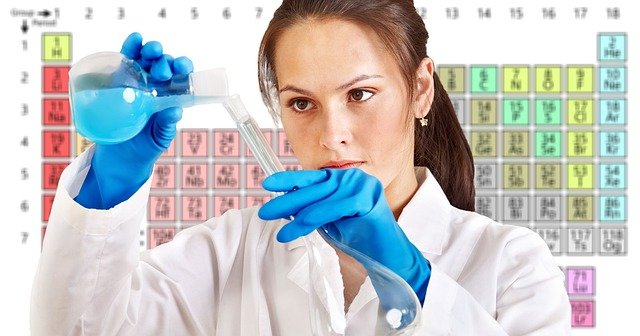
At first glance, chemical symbols may look like a school subject you just have to memorize. But if you look closer, you’ll see that learning them teaches kids much more than just science facts. It strengthens the way they think, the way they solve problems, and even the way they see the world.
Sharpening Memory and Focus
When children learn that Na means sodium, Fe means iron, and O means oxygen, they are training their memory. At first, it feels like learning a new language. But with practice, their brains become sharper at spotting patterns and recalling information quickly. This same skill helps in math, languages, and even daily problem-solving.
Building Logical Thinking
Chemical symbols are part of a larger system—the periodic table. When kids understand why elements are grouped together, they begin to see the logic behind it. They notice that Cl (chlorine) and F (fluorine) behave alike because they belong to the same group. This trains them to look for patterns and connections, a skill that’s useful in every subject.
Encouraging Curiosity and Discovery
Symbols are like keys that unlock new doors. When a child sees H₂O, they might ask: Why two hydrogens and one oxygen? Why not more? These questions lead to deeper exploration. Learning symbols doesn’t end with memorization—it sparks curiosity that pushes kids to ask why things are the way they are.
Problem-Solving in Action
When kids start using chemical symbols in equations, they practice problem-solving. For example, balancing a simple reaction like H₂ + O₂ → H₂O teaches them to think step by step, test ideas, and adjust until it works. It’s not just about chemistry—it’s about developing persistence and logical strategies for solving puzzles of all kinds.
Confidence Through Mastery
At first, chemical symbols can look intimidating. But once children realize they can read them—decoding CO₂ as carbon dioxide or NaCl as salt—they feel proud. That confidence carries over to other challenges. If they can handle what once looked confusing, they can handle anything with patience and practice.
How Debsie Helps Kids Learn Symbols the Fun Way
At Debsie, we take what might seem like hard or boring topics and turn them into exciting adventures. Instead of telling kids “memorize this list,” we show them how symbols are part of their world. For example:
- They learn that the CO₂ in their soda is the same gas plants use to grow.
- They see that the NaCl in their kitchen is the same salt in chemistry class.
- They connect the Fe in their breakfast cereal with the iron in their blood.
By linking symbols to real life, Debsie teachers make chemistry simple, clear, and unforgettable. Kids don’t just memorize—they understand.
And while they’re learning, they’re also building life skills like focus, problem-solving, creativity, and confidence. That’s the Debsie way: turning tricky subjects into stepping stones for lifelong growth.
Fun Ways to Practice Chemical Symbols at Home
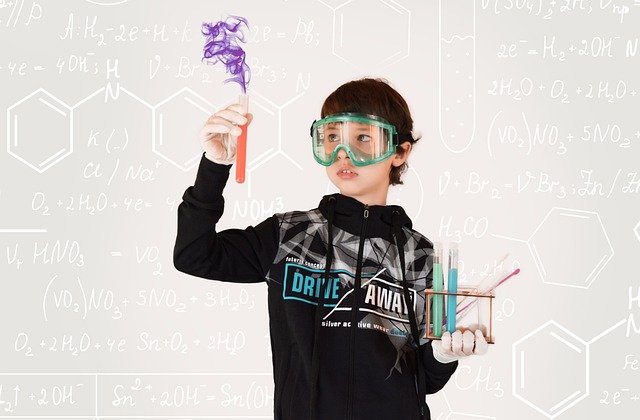
Learning chemical symbols doesn’t have to mean staring at a chart and repeating letters. When kids explore them through games, fun experiments, and daily observations, the symbols come alive. Here are some simple but powerful ways to make practice enjoyable.
Spot the Symbols in Daily Life
Science isn’t just in the classroom—it’s everywhere. Encourage kids to notice chemical symbols in the world around them. For example:
- Look at a bottle of water and connect it to H₂O.
- Read the nutrition label on cereal and see iron (Fe) listed as an ingredient.
- Notice the letters CO₂ on a soda can.
When children realize these letters describe what they eat, drink, and breathe, they start to see chemistry as part of their everyday lives.
Create a Symbol Matching Game
Turn learning into a game by making flashcards. On one card, write the symbol (like Na). On another, write the element’s name (sodium). Mix them up and have kids match the pairs. Over time, you can make it more challenging by adding atomic numbers or fun facts about each element.
This transforms memorization into a puzzle, which kids naturally enjoy solving.
Play “Guess the Element”
Take turns describing an element without saying its name. For example:
- “I am the element that makes balloons float. My symbol is two letters, and I’m lighter than air.” (Answer: He, helium)
- “I am the element that we breathe every second. My symbol is just one letter.” (Answer: O, oxygen)
This kind of role-play keeps learning interactive and helps kids remember symbols through clues and context.
Simple Experiments with Symbols
Hands-on activities help kids connect symbols with real science. For example:
- Show NaCl by dissolving table salt in water.
- Demonstrate CO₂ by mixing baking soda and vinegar and catching the bubbles.
- Talk about Fe by showing a magnet sticking to an iron nail.
By linking the symbols to visible experiments, children understand that these letters represent real substances, not just abstract ideas.
Creative Symbol Art
Encourage kids to draw or design posters with their favorite elements. They can write the symbol in the center and surround it with drawings of where it’s found—like Au (gold) in jewelry or Ne (neon) in glowing signs. This mixes art with science, giving kids a creative way to remember.
Make It a Family Challenge
Turn symbol learning into a family activity. Quiz each other at dinner or make a scoreboard for who can identify the most symbols in a week. Learning together makes it fun and helps children feel supported.
Why This Works
When children practice symbols in playful ways, they move from memorizing to understanding. They see patterns, make connections, and realize that these little letters represent the building blocks of everything. And most importantly, they begin to enjoy science—not fear it.
Conclusion – Unlocking the Language of Chemistry
Chemical symbols may look small, but they carry the weight of the entire universe. Each one is a shortcut that tells a big story: H₂O for water, NaCl for salt, CO₂ for the air we breathe out. By learning to read these symbols, children don’t just gain a science skill—they learn a whole new language that helps them see the hidden patterns of the world.
For kids, mastering chemical symbols is about more than memory. It builds focus, sparks curiosity, and teaches problem-solving. Every time they recognize a symbol, they feel a spark of confidence: I understand this. That confidence carries into every subject, making them stronger learners overall.
At Debsie, this is exactly how we teach. We take big ideas like chemical symbols and make them simple, clear, and exciting. By connecting them to everyday life—water in a glass, salt on the table, oxygen in the air—we help kids see that science isn’t distant or scary. It’s right here, all around them, waiting to be explored.
👉 Give your child the gift of curiosity and confidence. Book a free trial class at Debsie today, and watch how the “secret codes” of science turn into sparks of discovery.
Read Next:
